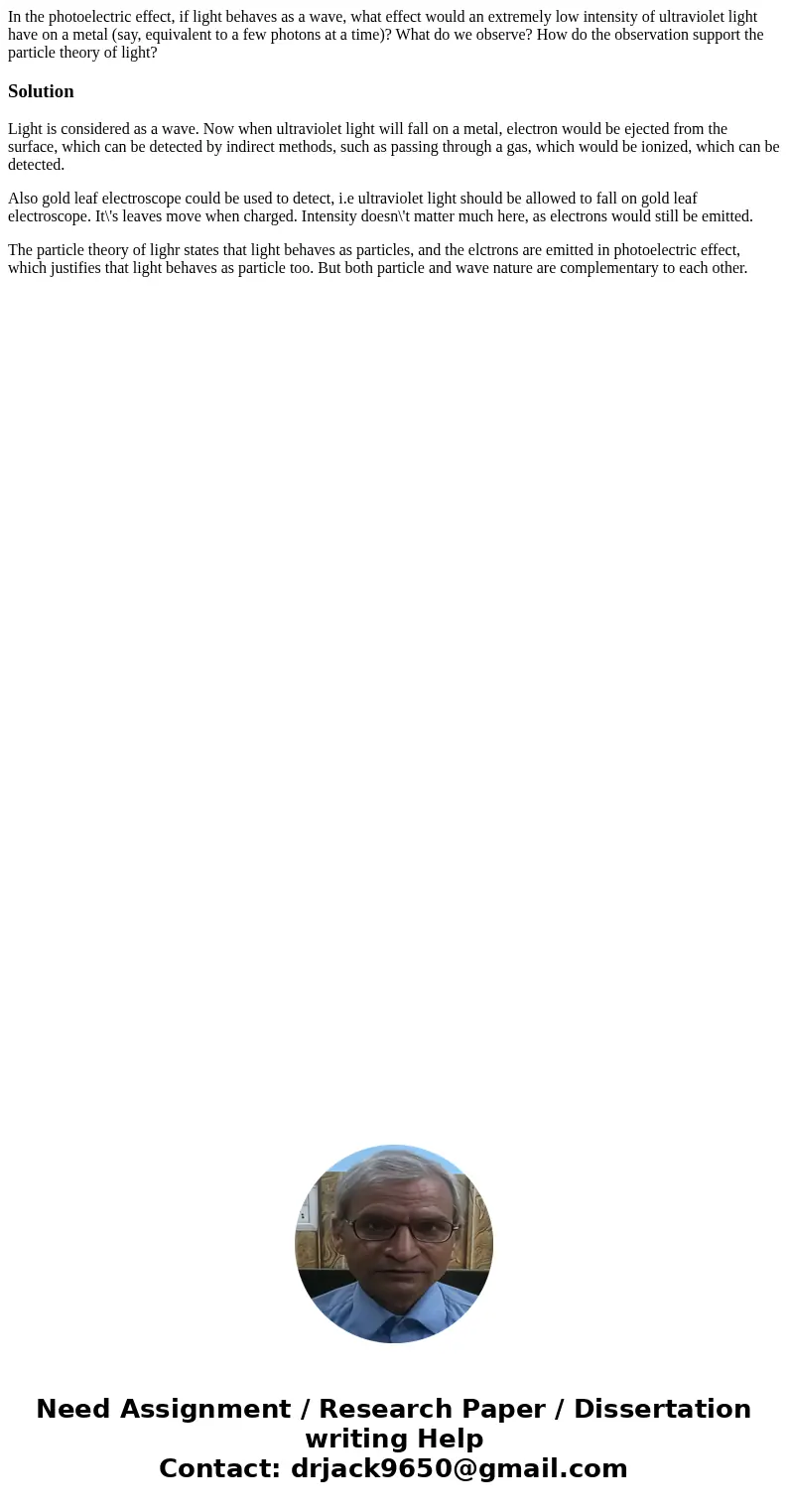In the photoelectric effect if light behaves as a wave what
In the photoelectric effect, if light behaves as a wave, what effect would an extremely low intensity of ultraviolet light have on a metal (say, equivalent to a few photons at a time)? What do we observe? How do the observation support the particle theory of light?
Solution
Light is considered as a wave. Now when ultraviolet light will fall on a metal, electron would be ejected from the surface, which can be detected by indirect methods, such as passing through a gas, which would be ionized, which can be detected.
Also gold leaf electroscope could be used to detect, i.e ultraviolet light should be allowed to fall on gold leaf electroscope. It\'s leaves move when charged. Intensity doesn\'t matter much here, as electrons would still be emitted.
The particle theory of lighr states that light behaves as particles, and the elctrons are emitted in photoelectric effect, which justifies that light behaves as particle too. But both particle and wave nature are complementary to each other.

 Homework Sourse
Homework Sourse